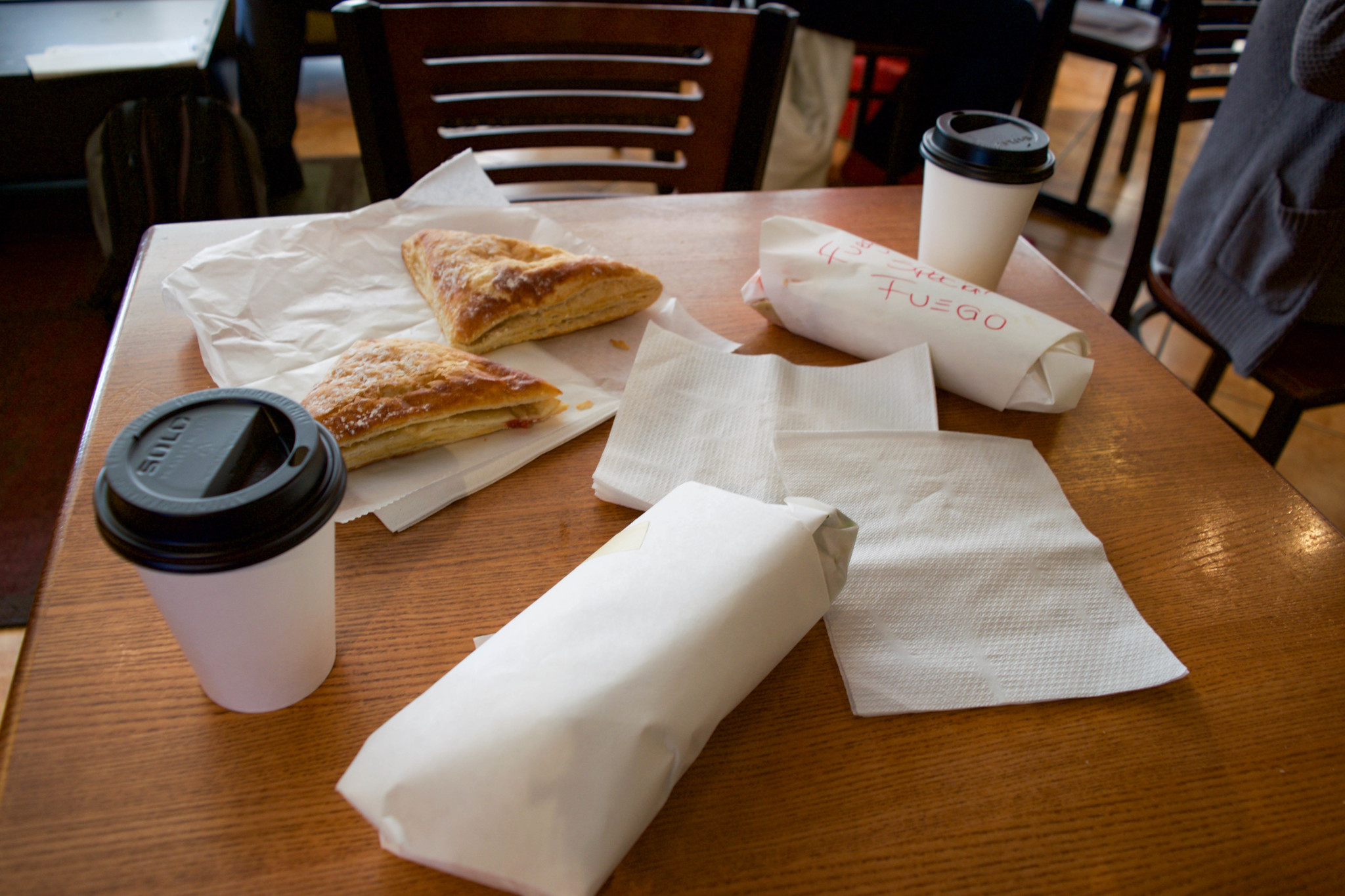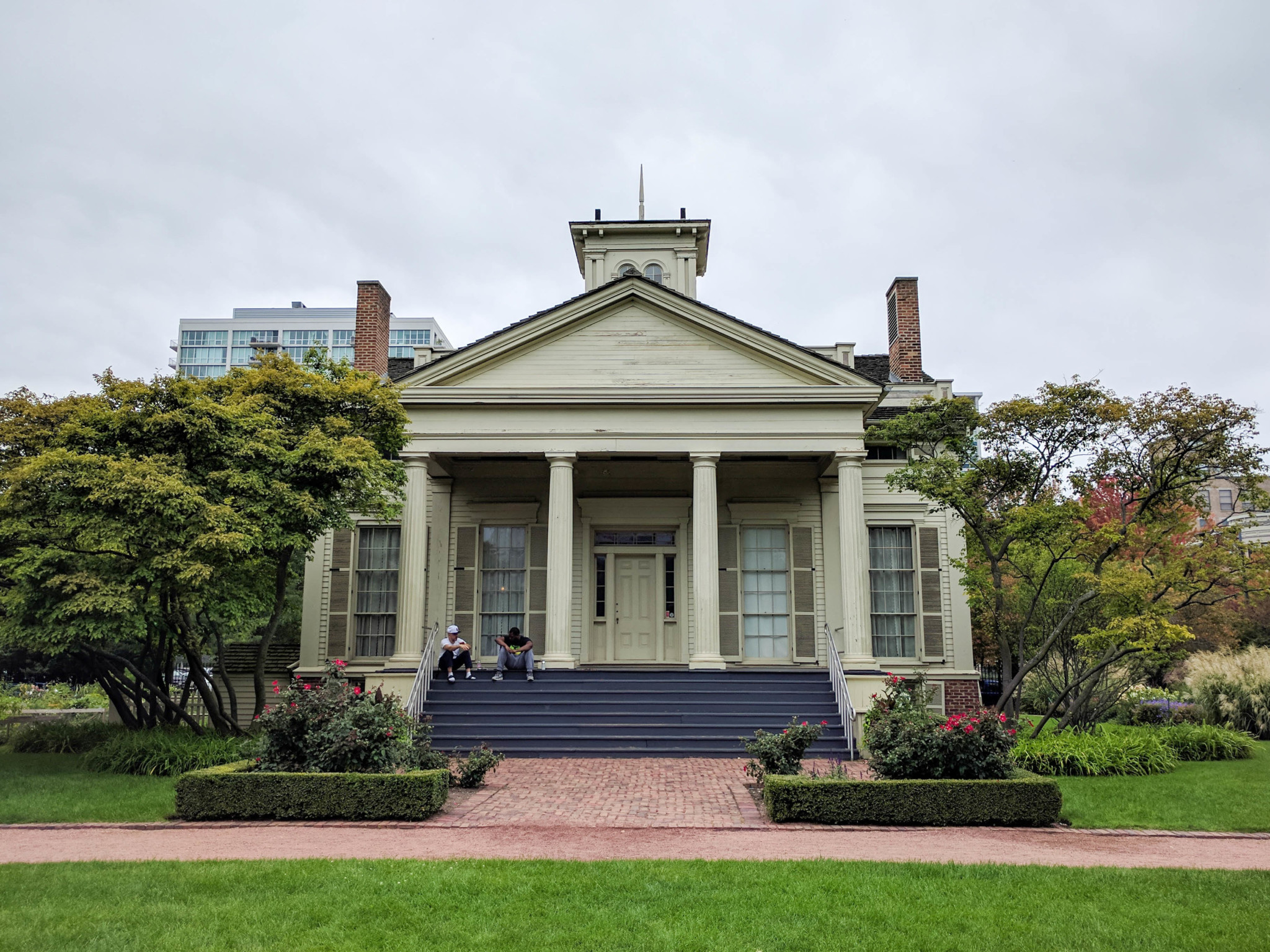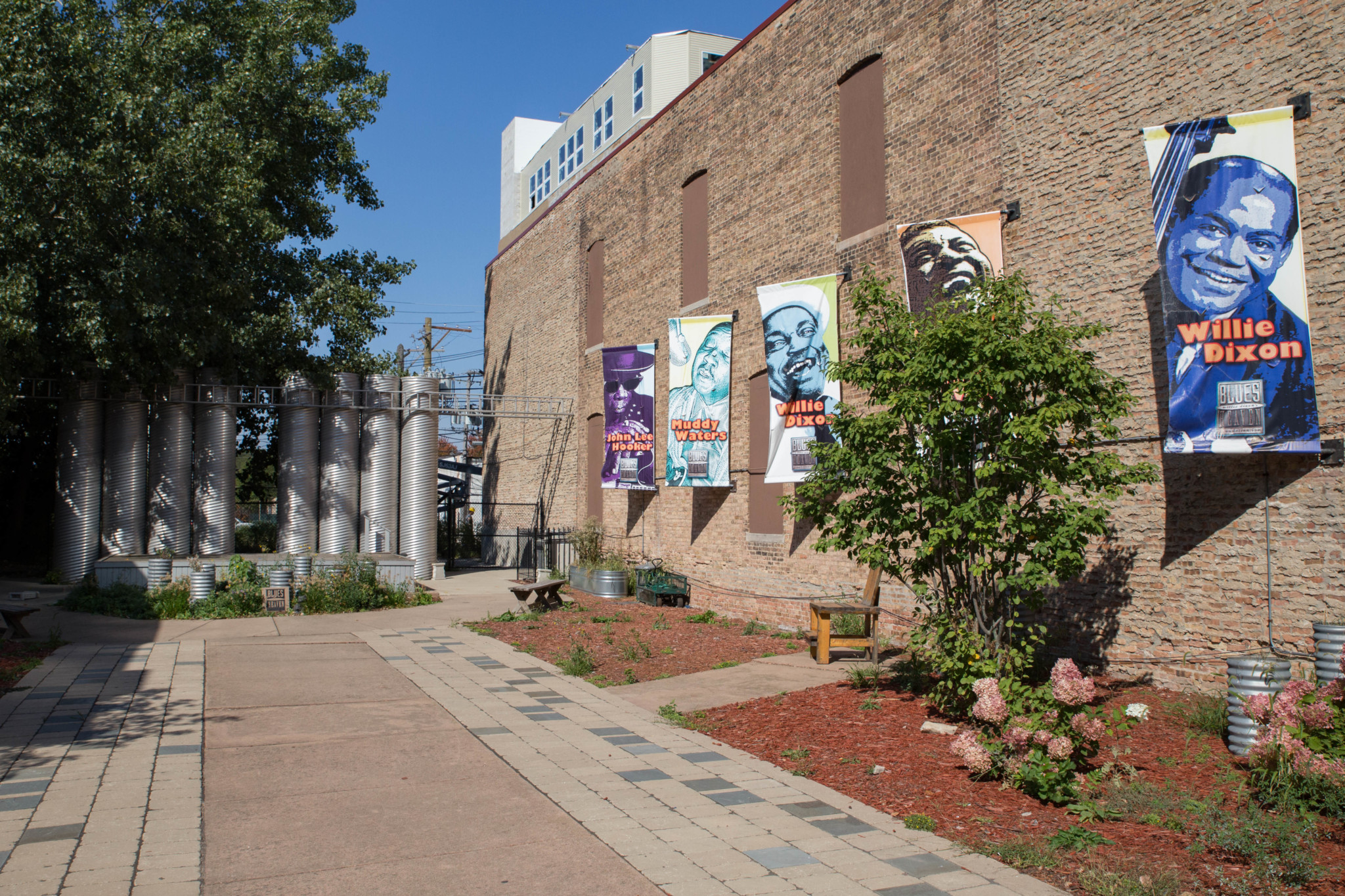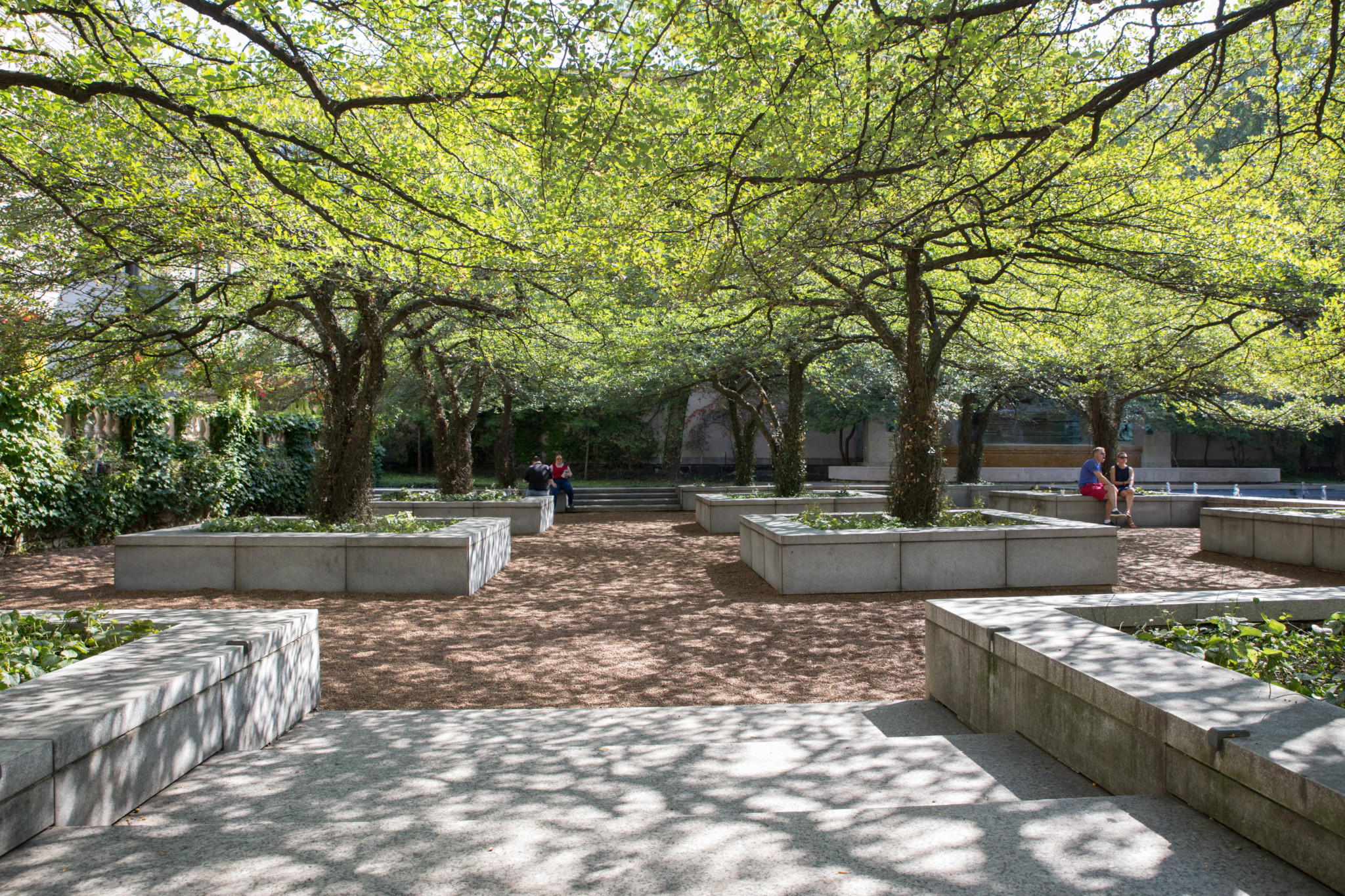Best Cuban Sandwiches & Much More
Cafecito

Rated multiple times by Time Out as one of the best Cuban spots in the city, Cafecito certainly earns its title with an array of delicious sandwiches. The chatter of conversation, the taps of the coffee maker, and the salsa music in the background provide a comfortable environment whether you’re on the run or sitting down for a bite to eat. Their menu is packed with breakfast sandwiches, Cuban and American coffee, café salads, pressed sandwiches, batidos (Cuban-style milkshakes), platters, and more. A favorite of mine is the Chivito sandwich, packed with steak, fried egg, bacon, mozzarella, lettuce, tomato, onion, and citrus mayo. There are also various vegetarian options, such as the Proveletta or the Jardin sandwiches. Cut in two halves, all of these sandwiches are served in good-sized portions and cost less than seven dollars. If you’re thirsty, try a café con leche, hot or iced—this drink is perfect for any season. Cafecito has three locations, and each has its distinguishing factors: the newest one Streeterville makes for the perfect post–Museum of Contemporary Art lunch, the tiny location on Wells is crowded on 9–5 lunch breaks (which is why you should stop by in the morning to get an even cheaper but just-as-big breakfast sandwich to go), and this large location by the Harold Washington Library is simply the best. (Roderick Sawyer)
Cafecito, 26 E. Congress Pkwy #1. Monday–Friday, 7am–9pm; Saturday–Sunday, 10am–6pm. (312) 922-2233. cafecitochicago.com
Art Institute of Chicago, South Garden
The South Garden is tucked away on the south side of the Art Institute of Chicago, in the middle of downtown. Unlike its northern counterpart, this garden houses only a few different types of plants and a single sculpture. Instead of lush greenery, you’ll find a ground covered in pebbles, interrupted by a grid of twenty-four raised planters, each holding a single hawthorne tree. The garden is split in two by a waterway leading up to the Fountain of the Great Lakes sculpture, from which water pours back into the pool. The landscape, designed by architect Dan Kiley, is precise, contained, and intimate.
Walking into South Garden feels like escaping into a kind of urban forest. The tree branches form a canopy, dotted with small red berries, that blocks the nearby skyscrapers from view; the bubble of the fountains obscures the sound of traffic. It’s the perfect spot for downtown workers and college students on a lunch break, newly engaged couples on a photoshoot, and foot-weary visitors alike. (Hafsa Razi)
Art Institute of Chicago South Garden, 100 E. Jackson Dr. Free. Closed in the winter. artic.edu
Prairie Avenue

Once home to Chicago’s rich and powerful—from George Pullman and Philip Armour to Marshall Field—South Loop’s Prairie District is now a quiet corridor of old buildings mixed with new townhouses and businesses. At one point, the area held nearly ninety houses, many of which were demolished in the early twentieth century to make way for a commercial district. About a dozen original structures still exist, some having been repurposed as an office or a gallery, others remaining private residences.
Only two houses are open for visitors—the Glessner House, a fortress-like architectural landmark, and the Clarke House, the oldest house in the city limits.
Designed by Henry Hobson Richardson, and inspired by medieval Romanesque architecture, the Glessner House feels very much a castle in the city, complete with granite walls, turrets, and beamed ceilings. The house is remarkably preserved, having been willed away to what would become the Illinois Institute of Technology, and later sold to the Chicago Architecture Foundation. The books on the shelves, the ornaments on the mantelpieces, the etchings hanging on the walls: all were packed away into boxes, and now stand close to where they did a hundred years ago, entire rooms’ arrangements recreated from old photographs.
The Clarke House, on the other hand, has been through several life cycles since it was built in 1836. Once a farmhouse at 16th Street and Michigan, the house was uprooted and moved to 45th and Wabash in 1872, leaving behind the classic pillars at the entryway. Decades later, it served as a congregation center for the predominantly Black St. Paul Church of God in Christ, which preserved the house and eventually sold it back to the city in 1977. The Clarke House was then moved back to the Prairie District, this time at 18th and Michigan, taken apart, and restored.
Virtually nothing remains of the original furnishings of the Clarke House—just a few scraps of paper (a piano ad), a fragment of ceiling ornamentation, part of a wooden barrister, and the diaries of a former boarder at the house. But from these sparse details, the house is constructed as a mid-nineteenth-century home, and filled with artifacts from that time period.
Touring both houses, I got a sense not only of the century-plus-old structures, but of the people who once lived in them. My tour guides did their best to link buildings to characters, connecting the structures in the Glessner House to the Glessner’s middle-class frugality and practicality, and the objects in the Clarke House to the Clarkes’ hardworking nature. It would take a certain leap of faith to believe these characterizations wholeheartedly, to conclude from these old mansions that we can begin to know their residents.
But standing in the Clarkes’ dining room and perusing the Glessners’ bookshelves, there’s an inescapable knowledge that, after all these years, their homes are still alive. (Hafsa Razi)
Glessner House, 1800 S. Prairie Ave. Tours Wednesday–Sunday, 11:30am, 1pm, and 2:30pm. Limited to fifteen people, first-come first-serve. Tickets $15 adults, $12 seniors and students, $8 children age 5–12. Tours free on Wednesdays. (312) 326-1480. glessnerhouse.org
Clarke House, 1827 S. Indiana Ave. Tours Wednesdays, Fridays, and Saturdays, 1pm–2pm and 2:30pm–3:30pm. Limited to fifteen people, first-come, first-serve. Free. (312) 744-3316.
Vee-Jay Records

It’s hard to miss the most famous former site of Chess Records, a recording company that produced the work of historic blues and rock musicians, from Muddy Waters to Chuck Berry to Etta James. If you weren’t already on the lookout for 2120 South Michigan Avenue, as the Rolling Stones termed it in the title of a song they recorded there, you’d get a lot of help: a tranquil “Willie Dixon Blues Garden” performance space sporting colorful banners of Chess’s famous blues singers, a plaque indicating the building’s landmark status, a large-windowed front that gives a taste of the memorabilia you’ll find more of in the museum inside (photos, fashion, instruments). Just a couple blocks north, though, sits a building equally steeped in history but without the recognition. Vee-Jay Records, a Black-owned record company that one record label owner once said “came the closest to being the number one black-owned pop label,” with the rights to groups like The Four Seasons, first established itself with success in blues and R&B. Perhaps of particular interest, regardless of your music taste, is that it was the first American label to release music by The Beatles. (A contract on them was thrown in along with the rights to a #1 song in England that Vee-Jay was really after.) Vee-Jay went out of business by 1966, but the building belonged to another major R&B/soul label, Brunswick Records, until 1976. In the years since, the site has stuck around as a neglected, white-brick two-story, dwarfed by Trevi Square next door. In 2011, when Alderman Bob Fioretti was floating his idea of South Michigan as Record Row, a would-be foundation voiced interest in turning the building into a museum and studio similar to the Blues Foundation, but six years later it’s still vacant. (Fioretti’s Record Row didn’t come to pass, either, but considering that his plan involved a restaurant-slash-museum-venue managed by the band Cheap Trick, this may be for the best.) In fact, it was sold to a real estate developer in 2014, and the building has no protected status; it can be torn down. You can still have the satisfaction of passing by, knowing you’re one of the few privy to the building’s history, but, perhaps, not for much longer. (Julia Aizuss)
Vee-Jay Records, 1449 S. Michigan Ave. veejayrecords.net. Chess Records/Willie Dixon’s Blues Heaven Foundation: 2120 S. Michigan Ave. Monday–Saturday, noon–4pm; tours on the hour noon–3pm. $10. (312) 808-1286. bluesheaven.com
Support community journalism by donating to South Side Weekly

